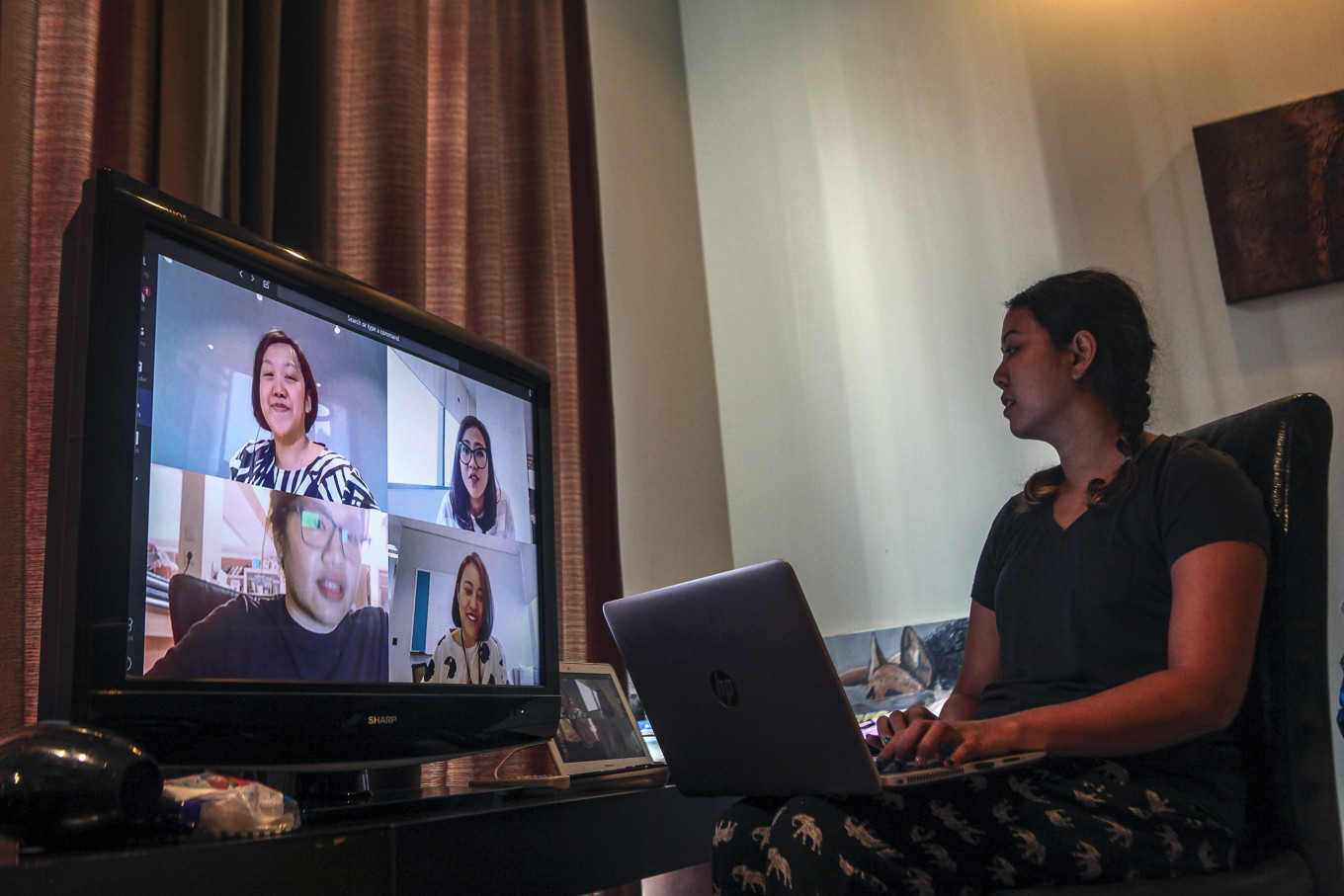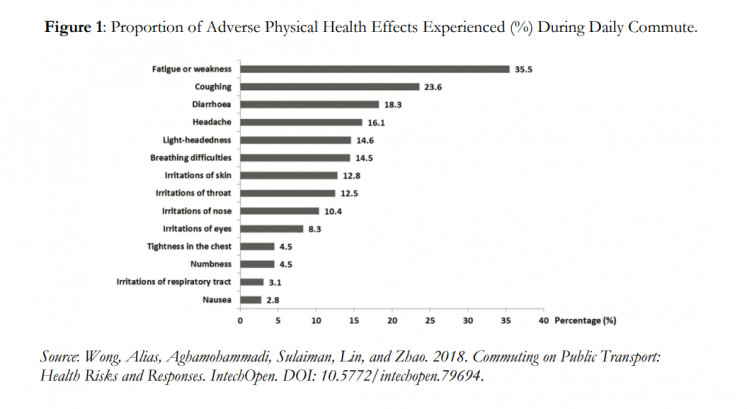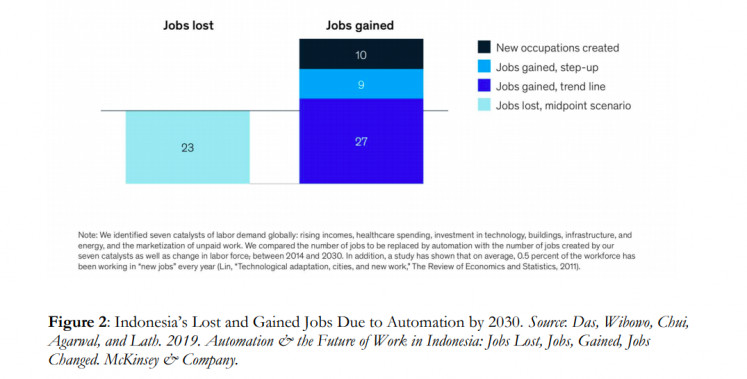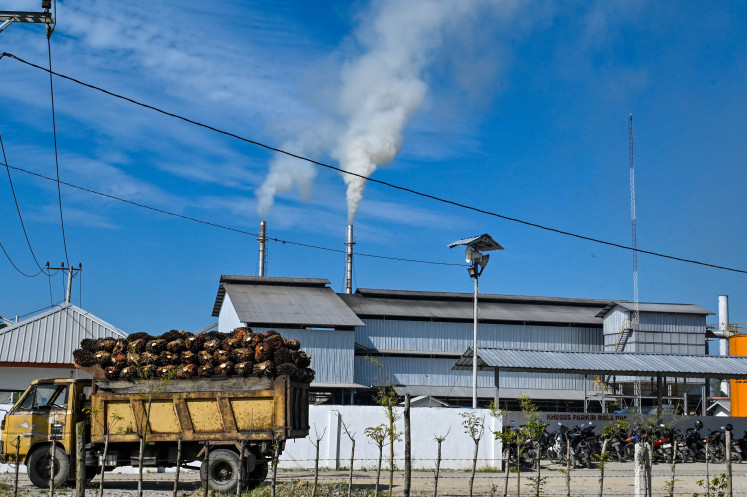Popular Reads
Top Results
Can't find what you're looking for?
View all search resultsPopular Reads
Top Results
Can't find what you're looking for?
View all search resultsWill COVID-19 ultimately change the way we work?
As the benefits of remote work become apparent, will our employment landscape shift for the long term?
Change text size
Gift Premium Articles
to Anyone
A
lmost all the countries in the world have taken measures to contain the spread of COVID-19. Due to its highly contagious nature, which can cause cases to grow exponentially when unchecked, limitations on the movement of people have been enacted. In Jakarta, a pandemic state of emergency has been declared. Companies across the capital have been urged to allow employees to work from home where possible. As the benefits of remote work become apparent, will our employment landscape shift for the long term?
The advantages of working from home
Working remotely can bring improvements to well-being, productivity, and the environment. About 1.5 million daily-commuters in Greater Jakarta could avoid significant health risks by working from home. Studies have shown that driving a car for more than 10 miles and riding a bus for more than 30 minutes lead to an increase in blood pressure, poorer sleep quality and increased risk of depression. Moreover, being exposed to pollution can also be detrimental to the health and psychological condition of workers. Figure 1, taken from a recent study, displays common pollution-related health effects experienced by commuters.
Furthermore, workers benefit from better work-life balance while working remotely. They are able to spend more time with their kids, exercise more regularly and enjoy their hobbies. This increases their happiness. Data from Telavox shows that 81 percent of remote workers are satisfied with their jobs. Another advantage of remote working is the cost efficiency it offers, both to firms and workers. Companies in the United States could save approximately US$5 billion a year by letting employees work from home, while an average American worker could save up to $4,000 per year by telecommuting (working from home by making use of the internet), as reported by FlexJobs.
The impacts of remote working on worker productivity and the environment are salient. A 2014 study from Oxford University found that working from home increased employee performance by 13 percent. The productivity boost could even be seen by the workers themselves. According to a PGi report in the same year, 70 percent of workers in the sample said that telecommuting had improved their productivity. Reasons for the improvement include fewer distractions, optimal hour distribution and lower stress from commuting.
There is also evidence about the positive environmental implications of remote work. When the city of Wuhan, where COVID-19 was first discovered, was put on lockdown in January 2020, NO2 levels across eastern and central China dropped between 10 and 30 percent lower than average. A similar phenomenon has occurred in Jakarta, where the Air Quality Index (AQI) reached the relatively low figure of 72 on March 22, after a number of companies instructed employees to work from home. Both drops in pollution came from the decrease in commuters. The increase in worker well-being, which in turn contributes to productivity, combined with improvements in the condition of the environment, will be the driving forces behind what is called Green Total Factor Productivity (GFTP). The term refers to the overall productivity of an economy when labor, capital and environmental concerns are taken into account.
Hinderances to a fully remote economy
Even during the COVID-19 pandemic, working from home is not feasible for all workers. One of the reasons is that approximately 60 to 70 percent of Indonesians work in the informal sector and their jobs necessitate their continuous physical presence. This is an enormous figure, compared to the European Union and the United States, with about 20 percent and 36 percent of their populations in the informal sector respectively. Jakarta isn’t excluded; 80 percent of workers in Greater Jakarta have a job that cannot be performed remotely. If the government enforces a lockdown to battle COVID-19, the economic condition of these workers could become dire very quickly.
Recent analysis has found that a one month lockdown in Jakarta would create a one percent drop in GDP. Moreover, informal workers have already been harmed by the work-from-home policy. Gojek and Grab drivers have reported drops in their daily income. The government’s inclusive growth strategy, which seeks to involve the informal sector in economic development and helped bring about the nation’s notable growth in the 1980s, is threated by these circumstances. Automating routines and teaching needed skills could be fruitful and lead to a net gain of 23 million jobs, as McKinsey notes in Figure 2.
However, even after the distribution of preemployment cards, automation is another heavy chapter to be discussed since it unfolds in the long run. Of course, future improvement come with short-term tradeoffs, which could be unbearable due to the current worrisome situation.
Working from home has several disadvantages as well, especially when it happens for prolonged periods as it is now. Nicholas Bloom, one of the authors in the Oxford study above, notes that being forced to work fully remotely without socializing can harm the mental health of workers.
A 2017 ILO report found that 41 percent of fully remote workers had high stress levels, compared to 25 percent of office workers. The result not only originated from minimum social exposure but also from an obscure definition of working hours in which employees felt like they were working without time or space limitations. Creativity and team-based problem-solving practices are also inhibited by remote work as they often require sustained contact between teammates.
Digital productivity platforms such as Zoom, Google Meet and Trello could come in handy. However, a number of workers are still getting acquainted with these tools. Zoom added more than 2 million new users from January to February 2020, more than the number of new users throughout all of 2019. The fact shows how old-fashioned many companies remain. The usage of these tools depends on the learning curves of companies in utilizing them.
Possible Alternatives
The most practical approach is, perhaps, to enact a partial work-from-home scheme. Eligible employees (those with work that can actually be done at home, predominantly managerial and non-technical staff) would only be obliged to come into office part of the time, with flexible working hours, or when there was an important directional meeting. Other than that, employees could freely choose whether to work at home, with their colleagues or at a café. During remote periods, communication would rely on digital applications like those being used while COVID-19 measures are in place.
HR officers might also organize social events, which are common in joint working spaces, for these frequently remote workers to retain bonds between teams and fulfill employees’ needs as social beings. In this way, companies would cut operational costs and be able to redirect funds to other important things while enjoying the increased productivity of their employees. This has been called by Harvard researchers the “alternative workplace” system which was first experimented with by AT&T in the 90s and led to a 30% improvement in cashflow. This working arrangement is already somewhat commonplace in the Western world, where 16 percent of the American workforce works remotely for part of the time.
By implementing the “alternative workplace” policy, the well-being of those who are not able to work remotely wouldn’t be diminished. The remaining commuters would enjoy less traffic and less crowded public transportation. Both changes would reduce air pollution, which would benefit everyone. Moreover, informal workers’ incomes would be stabilized since not all of their customers – often office workers – would have vanished. This could deliver a “transitory buffer” for informal workers before they eventually face a significant automation and skill-formalization process which is predicted by McKinsey to occur thoroughly by 2030. COVID-19 has compelled major changes in our daily lives, and it’s worthwhile for us to extract all the potential knowledge, life experience, and blessings in disguise from this calamity. The aforementioned alternative way of working carries numerous probable gains for worker well-being, economic productivity and the environment, ultimately establishing an increase in GTFP. However, these advancements will only thrive if companies are able to carry out the policy comprehensively, particularly in the post-pandemic era.
---
Research Intern, Department of Economics, CSIS Indonesia











